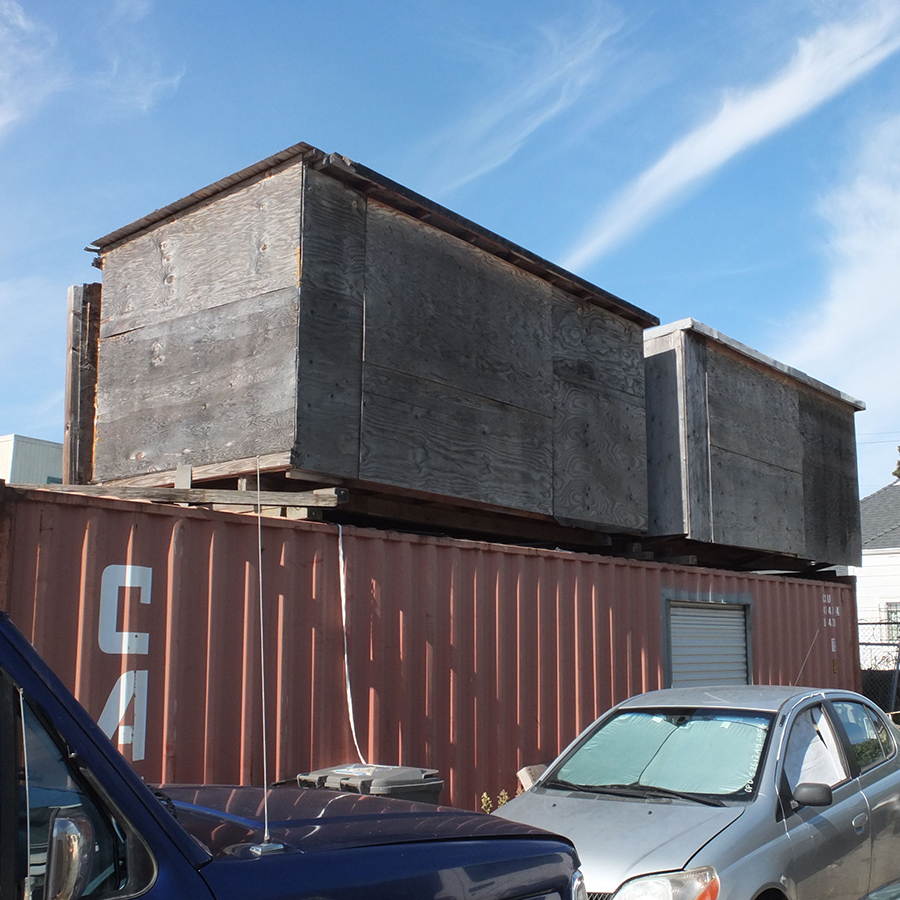
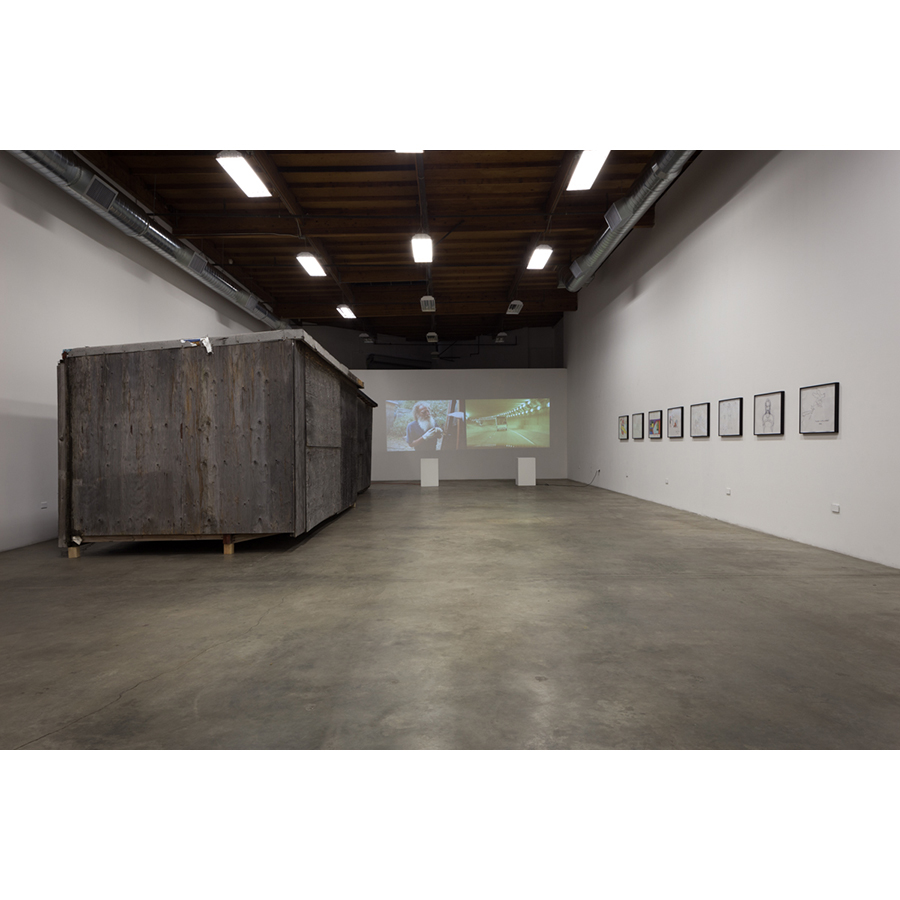
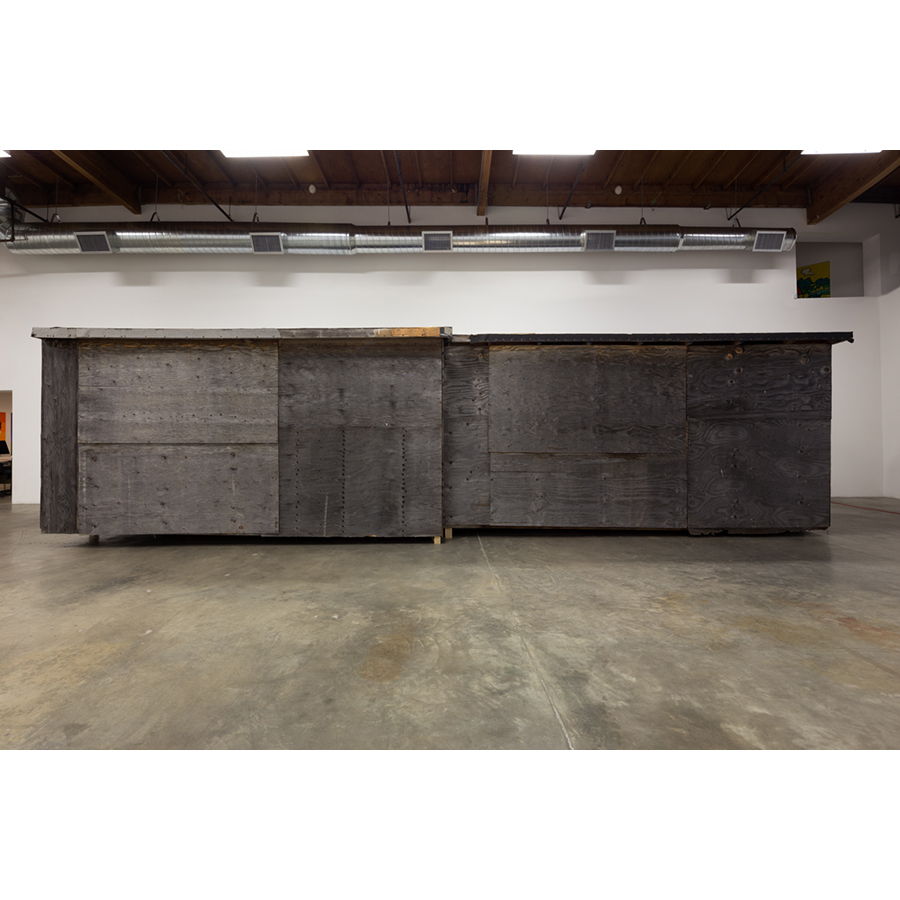
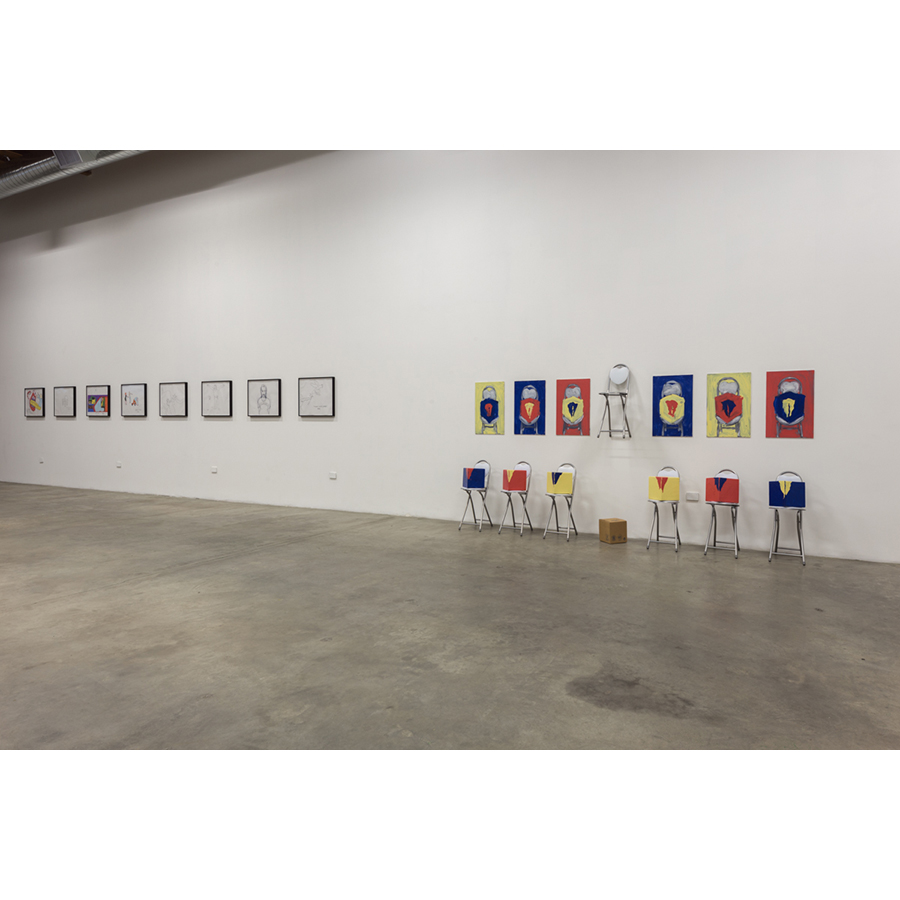
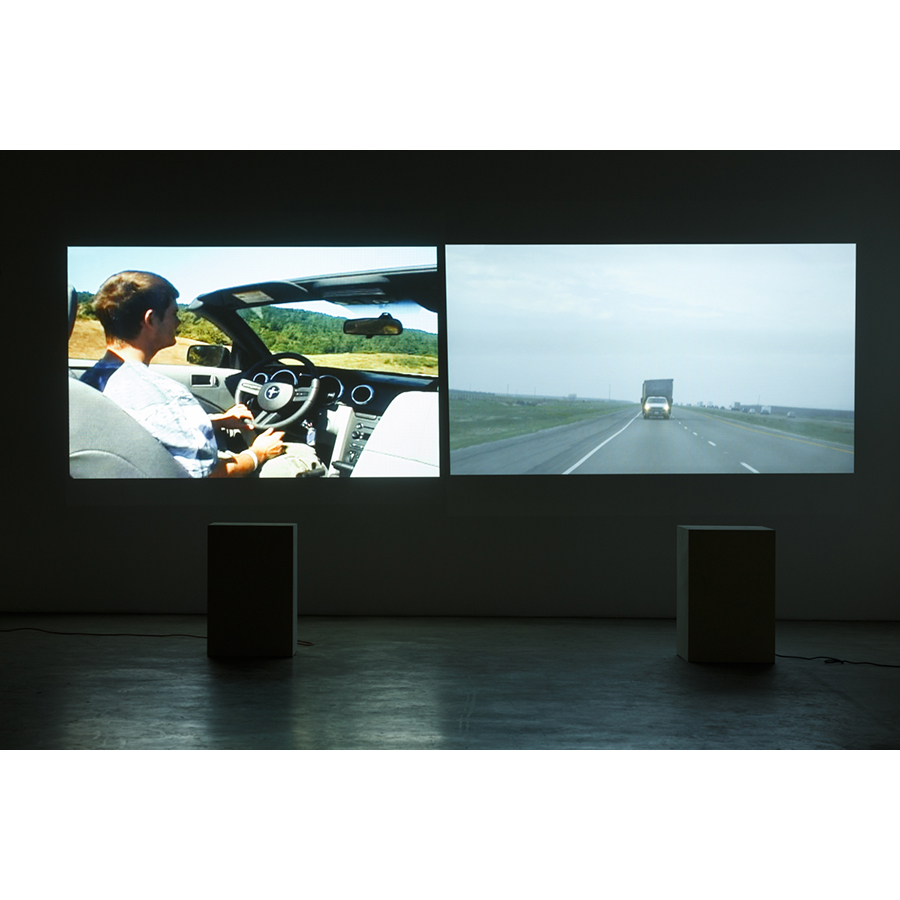
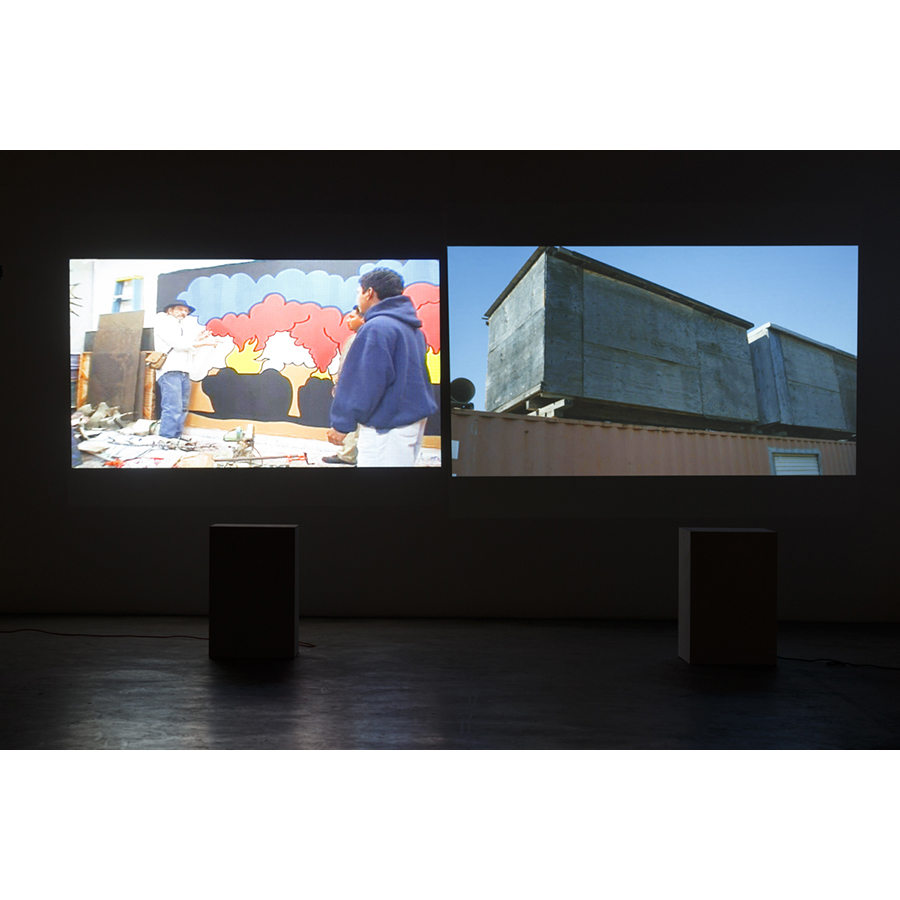
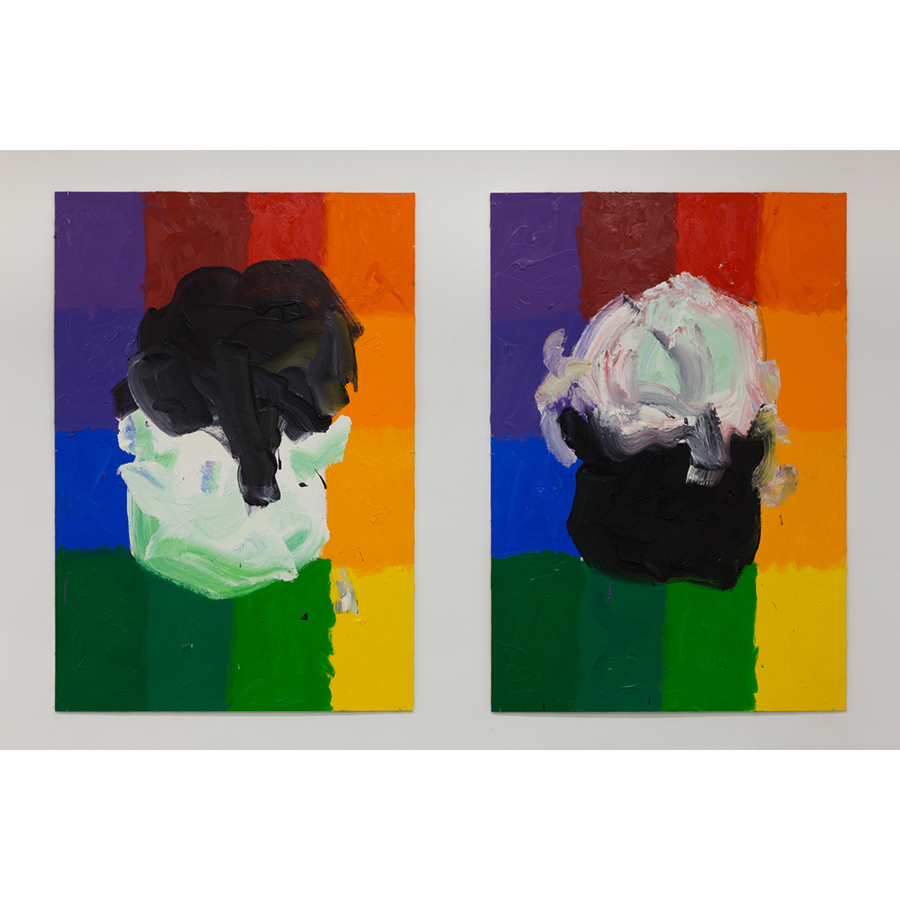
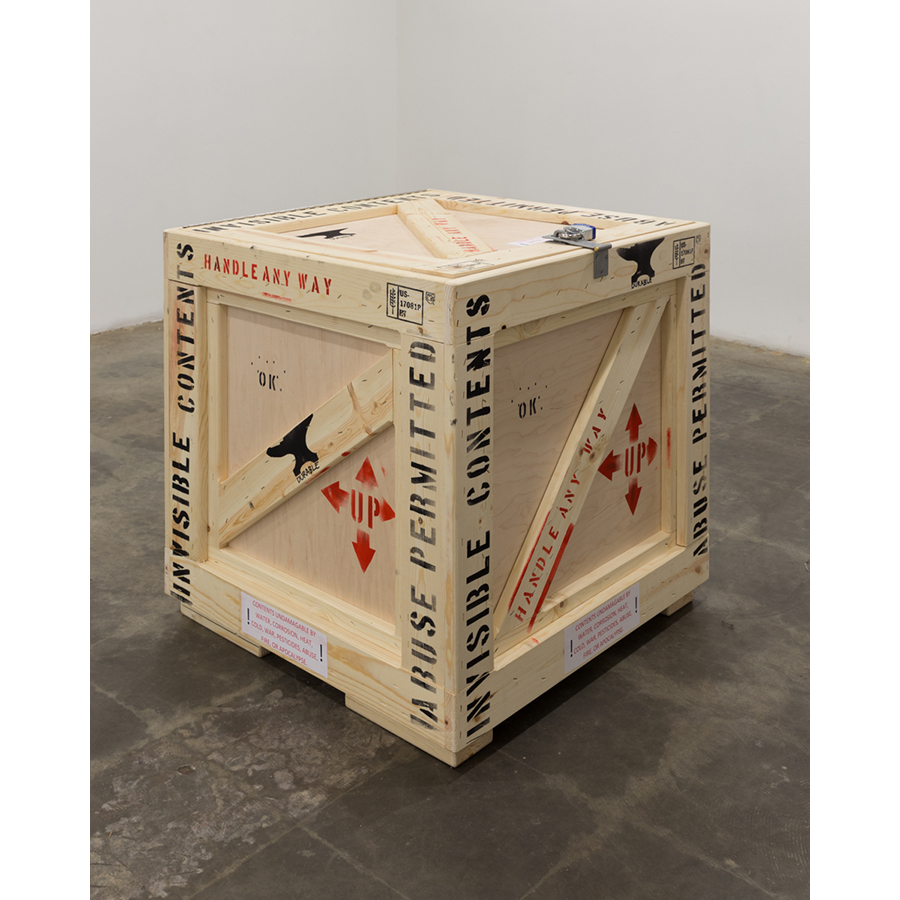
Al Payne
The Painting Sheds & Paris
January 24 – March 7, 2015
Opening reception Saturday January 24, 4-7pm
Special performances January 24 & March 7, 4pm
Al Payne is not a name the art world knows, but it should. This exhibition will give you a glimpse into his state of mind in the last two years of his life. The focal point of the exhibition will be The Painting Sheds that he built when he lived in Bolinas, CA with his family. They held the majority of the art he made over the years, including a growing catalog of paintings that he made while living there, many not seen by anyone other than himself and his camera. Along with these sheds, there will be films documenting the moving of The Painting Sheds, 1976-2005, both from Bolinas (in 2008) to Oakland, CA and then to Los Angeles, CA for this exhibition. A selection of pieces conceived and made while he was living in Paris, France will also be shown. The Painting Sheds hold an accumulation of his art practice from before and during his time in Bolinas, sealed and shown as sculpture, a decision he made after leaving Bolinas. The works from Paris, France show the refocusing back onto himself and his practice.
Payne was a strong conceptual artist and painter in his early life, later becoming a devoted family man in Bolinas. As the children got older and spent less time at home, he began being more invested in his practice again, making paintings of what he called the “here and now” painting pieces of the family and home. Shortly thereafter he began to use the materials around him, including a series of paintings using the soil from the property. All of this work went into the sheds, along with a collection of paintings and pieces that he had done in the 1970s and 1980s. His life as an artist existed in the sheds. After leaving Bolinas, Payne began to think differently about the sheds, he wanted to show them as sculptural objects. With the separation from his wife he had to leave them behind, but then his friend Paul McCarthy wanted to include the sheds in an exhibition he was curating at CCA, Low Life Slow Life, Part 1 (February 07 – April 12, 2008). Payne was excited about the sheds being shown at CCA but he also wanted to show them at The Box. Another good friend, Scott Atthowe, together with Paul McCarthy helped Payne remove them from the property in Bolinas. Shortly after, Payne returned to Paris for a month or two. Upon returning to California he was diagnosed with cancer that had returned after being in remission for many years. Al Payne died in September 2007 and missed the opening at CCA.
Before his death Payne told McCarthy about a dream he had where each of his paintings were carried one by one. This dream came true after his death, because when The Painting Sheds were installed at CCA they had to remove all the paintings in order to move the sheds into the building. Each painting was then carried individually and placed into the sheds. The Painting Sheds were then sealed up for the remainder of that exhibition. For the opening of this exhibition on January 24th, each painting will again be carried individually into the sheds and then sealed up for the remainder of the show, and then carried out individually at the closing of the exhibition on March 7th.
Al Payne went from a low moment, having to leave a difficult situation with his wife and letting go of that pain, to a new found strength and power in a new life; a new life in Paris. For Payne the city of Paris gave him a new freedom, to refocus back on himself and his art practice. Paris was an invigorating as he explored the art world of the city and the city itself, finding the culture and the people intriguing and enlightening. There are two pieces that were conceived in Paris that will be in this exhibition: The Invisible Sculpture, 2006/2007/2015 and Love’s Panopticon, 2006/2007. The Invisible Sculpture, a piece that has been manifested post-mortem, was described in a very detailed manner in a notebook, to be carried out after his death. The materialistic component of this work is a crate built to Payne’s specifications that holds The Invisible Sculpture, the size and dimension of which changes each time it is opened (aka installed). The crate of this work has labels on it that describe that it is to be abused and not treated well. These labels are the exact opposite of what is normally stated on an art crate, typically marked as “fragile.” He was questioning the reasons for the sacredness that is placed on art objects and suggesting there is a possible absurd nature to the preciousness placed on works of art. He was pushing us to consider how highly we value the objects and suggesting that we should equally consider the value of the ideas behind these objects. This language could be a criticism of the high monetary value that the contemporary art market places on art. The words used here also suggest some parallels to the intense situation he left in Bolinas and in that way, the crate and artwork inside personify the pain he felt at that time. Al Payne wanted to show this piece at The Box when he was alive, but the piece never got a chance to manifest it until now.
This exhibition will tell the story of the brief period of time at the end of Al Payne’s life, going down down down, to up up up and then finding out the cancer he had years ago had returned with a vengeance. Al Payne’s story is not an easy one to hear but is an important example of the strength one can find in the practice of art and the joy and knowledge it can provide.
To conclude here is a page from Al Payne’s journal from his time in Paris, where he was looking back on his life and his art practice:
Themes of painting-my history
Includes non-painting
1950s-child artist
1960’s-art student
early realization that art is unlimited, leading
70’s- to inclusive experiment-concept enacted. producing metaconceptual picturing.
1975-anima paintings-gauze-catharsis of heartbreak and failure. enactment of hope
1976-77- backsheets, gauze with wood frames
1978-82-permutation as structure (concept), inviting the metaconceptual thru existing as physical object and sound (music),
altered thru existence in space and time, slashing, rotting, rat piss, scuff, etc., performance- music/painting
1983-86-painting only-containing music visually in paintings-metaconceptual conjuring thru painting, all contain permutation as process. Form and imagery as result. Attempt at conjuring the unthinkable thru painting. Music separate put containing structure- words and music, rock & roll.
1987-2001-reaction to cancer, light and passing of time, family as subject-drawings, painting pictures of family, home.
Focus on here, now.
2002-2004-Dirt paintings-here, now. Existence drawings
2005-2006-reaction to parents death, rejection by family-Painting o/c. Paintings becomes ‘automatic’ avoidance of photography as basis for imagery. Draw, paint.
Late ’00-invisible sculpture, engage artworld, recovery from family rejection-Paris
Al Payne was born on July 9, 1947 in Syracuse, UT and grew up in Salt Lake City. He received two degrees from the University of Utah, a BFA in 1969 and then for an MFA in 1973. He went back and forth between Los Angeles and Salt Lake City from 1970-1975. During his time in the Los Angeles area, he was connected to artists like Paul McCarthy, John Duncan, Ron Benom and Barbara T. Smith and was a part of many local exhibitions and performances. One of note took place at Los Angeles Institute of Contemporary Art, which was a large scale musical performance based on a series of paintings, Chi Chi Fascisti, 1980. He lived in Oakland in the late 1970s to the early 1980s and later moved to Bolinas, CA in the mid 1980s. In 2004 he had a one person exhibition at SFMOMA Artists Gallery in San Francisco. He moved to Paris in 2006. He died in September of 2007.
If you have any questions please contact:
Mara McCarthy, Principal/Curator of The Box at info@theboxla.com / 213 625 1747